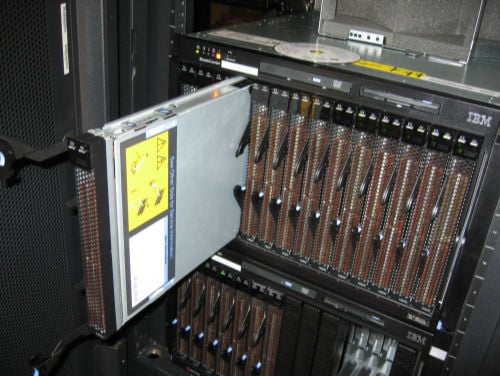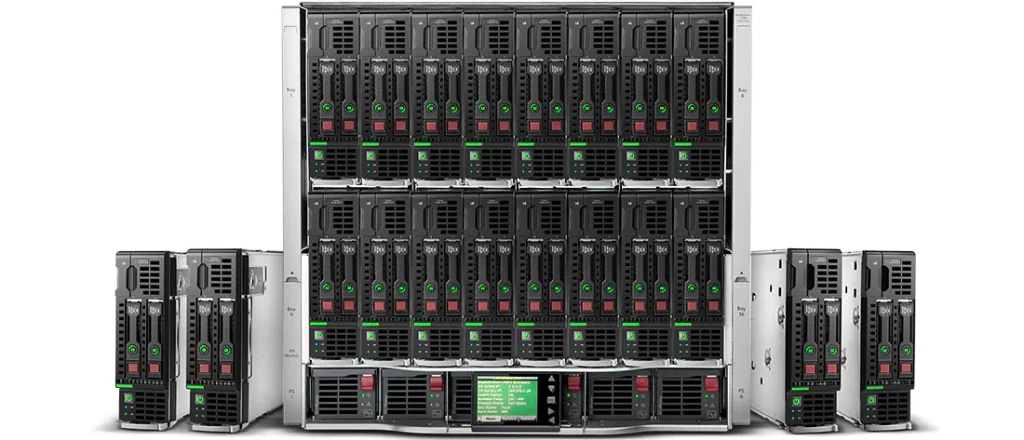Can blade servers be used in small businesses?
Blade servers are often associated with large enterprises and data centers due to their high-density design and upfront infrastructure costs, but they aren’t exclusively for large organizations. Whether a small business can benefit from blade servers depends on its specific needs, budget, and operational constraints.

Why Blade Servers Are Often Not Ideal for Small Businesses
For most small businesses (e.g., 1–50 employees), because of blade server limitations, they are typically overkill.
High Upfront Costs
Blade servers require a proprietary chassis (the enclosure that houses the blades) in addition to the individual blades. A basic chassis (e.g., 4–8 blade slots) can cost $5,000–$15,000, plus the cost of blades ($2,000–$5,000 each). For a small business needing just 2–4 servers, this total investment ($10,000–$35,000) is far higher than alternatives like rack or tower servers, which can start at $1,000–$3,000 per unit with no chassis required.
Complexity & Overhead
Blade ecosystems (chassis, shared power/cooling, management tools) require specialized knowledge to set up and maintain. Small businesses with limited IT staff (or no dedicated IT team) may struggle with tasks like configuring shared network switches in the chassis, troubleshooting backplane issues, or updating firmware across the system. In contrast, rack/tower servers are plug-and-play for basic workloads (e.g., file sharing, small databases).
Underutilization
Blade servers excel at high-density computing, but small businesses rarely need the density they offer. A single 8-slot chassis can host 8 servers—far more than most small businesses require. This leads to wasted capacity and unnecessary energy consumption (chassis components like fans and power supplies draw power even if slots are empty).
Vendor Lock-In
Blades are proprietary: A Dell blade won’t work in an HPE chassis, and vice versa. This locks small businesses into a single vendor for upgrades or replacements, limiting flexibility if they want to switch brands later.

When Blade Servers Might Make Sense for Small Businesses
In rare cases, small businesses with specific needs could benefit from blade servers. These scenarios include:
Space Constraints
If a small business has extremely limited physical space (e.g., a tiny office with no dedicated server room), blade servers’ high density can be a lifesaver. For example, 4 blade servers in a 7U chassis take up ~12 inches of rack space, whereas 4 1U rack servers would need ~7 inches each (28 inches total). This can be critical for businesses like small law firms, design studios, or medical practices with space restrictions.
Rapid, Predictable Growth
If a small business expects to scale from 2–3 servers to 6–8 within 1–2 years (e.g., expanding into e-commerce or adding virtual desktops), blades can simplify scaling. Adding a new blade is faster than deploying a new rack server (no need for extra cabling or power setup), reducing IT labor costs over time.
Focus on Operational Efficiency
Blades’ shared power and cooling systems are more energy-efficient than individual rack servers. For small businesses with high electricity costs (e.g., in regions with expensive power) or sustainability goals, the long-term savings on energy bills might offset the upfront chassis cost—though this typically takes 3–5 years to materialize.
Centralized Workloads
Small businesses running standardized, high-demand workloads (e.g., virtualization with VMware/Hyper-V, small private clouds, or lightweight AI tools) can benefit from blades’ centralized management. Tools like HPE OneView or Dell OpenManage let admins monitor all blades via a single dashboard, reducing the time spent managing individual servers.
评论
发表评论